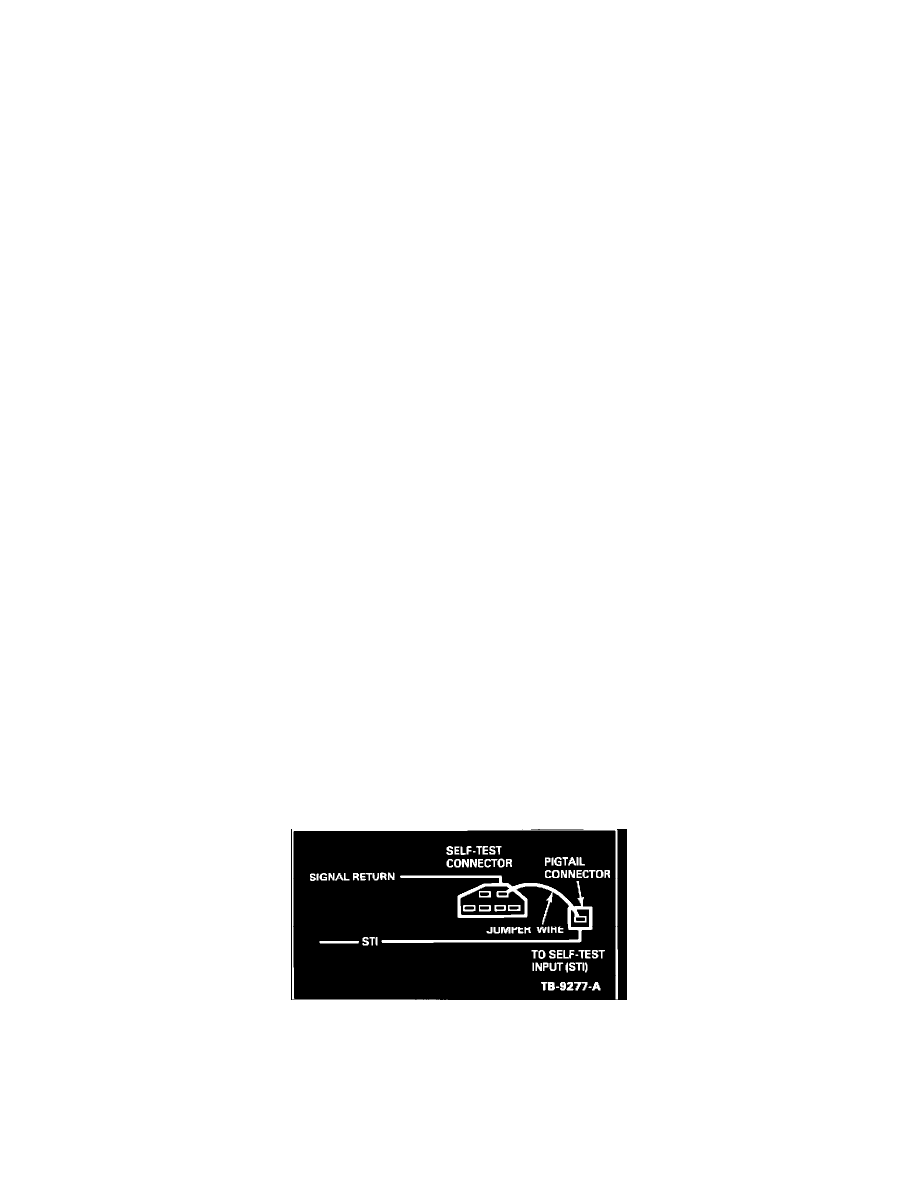Tempo L4-140 2.3L CFI (1985)

Idle Speed: By Symptom
Technical Service Bulletin # 87197
Date: 870923
Engine - High/Erratic Idle
Article No.
IDLE - ERRATIC OR HIGH - 2.3L HSC CFI -
87-19-7
DIAGNOSTIC AND SERVICE TIPS
FORD:
1985-87 TEMPO
LINCOLN-MERCURY: 1985-87 TOPAZ
ISSUE:
Erratic or high engine idle speed on 1985-87 Tempo/Topaz vehicles with 2.3L HSC CFI may be caused by incorrect setting of the throttle
stop adjusting screw (hard stop), linkage or throttle body binding, TV rod adjustment, or EEC IV processor.
ACTION:
To correct this, use the following service diagnostic procedure.
NOTE:
Before proceeding, make sure there are NO SYSTEM VACUUM LEAKS.
1.
If high idle is not present during initial check, perform EEC IV Self-Test. If Service Codes are present, refer to the Engine/Emission Diagnosis
Shop Manual, Volume H, Section 16 for instructions. For 1987 vehicles (only), if Continuous Service Code 78 appears, follow Pinpoint Test
Q-60. If condition is still present, continue to Step 2.
2.
If learned idle is above specification make sure the throttle plate is free and cruise control cable (if equipped) is not holding the throttle open.
NOTE:
Refer to the specification charts on pages 18 and 19 of this TSB for engine idle speed.
3.
Check to see if the throttle lever is in contact with the idle tracking switch (ISC motor).
a.
If there is contact, apply a light upward force on the throttle lever against the tip of the ISC motor. If the ISC motor now controls the throttle
RPM down to the correct Adaptive/"Learned" idle speed then the throttle lever may be bent or hard stop requires adjustment. The throttle
body may have to be replaced.
NOTE:
Before replacing the throttle body on ATX vehicles, make sure the TV rod adjustment with Idle Speed Control (ISC-DC motor) is
retracted. Refer to TSB 86-3-20.
b.
If there is no contact, determine if the throttle stop adjusting screw (hard stop) is holding the throttle plate open (high RPM). If held open, the
hard stop screw must be adjusted. Retract the ISC motor and reset hard stop in the exact sequence shown below.
NOTE:
The hard stop setting when properly set does not in any way determine idle speed ("learned" or fast idle).
Retract the ISC Motor:
^
Shut engine Off and remove air inlet tube from throttle body. In the engine compartment, find the Self-Test connector and Self-Test input
connector.
Figure 6
^
Connect a jumper wire between the SelfTest input connector and the signal return pin on the Self-Test connector, Figure 6.
^
Turn the ignition key to the "Run" position. DO NOT START ENGINE.
^
The ISC plunger will retract. Wait until plunger is fully retracted (about 5 to 15 seconds).
